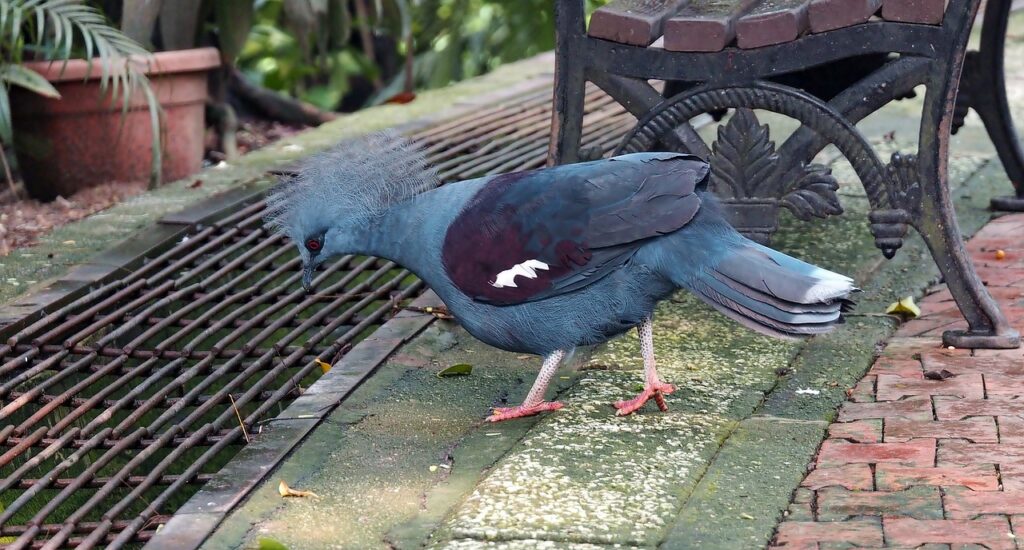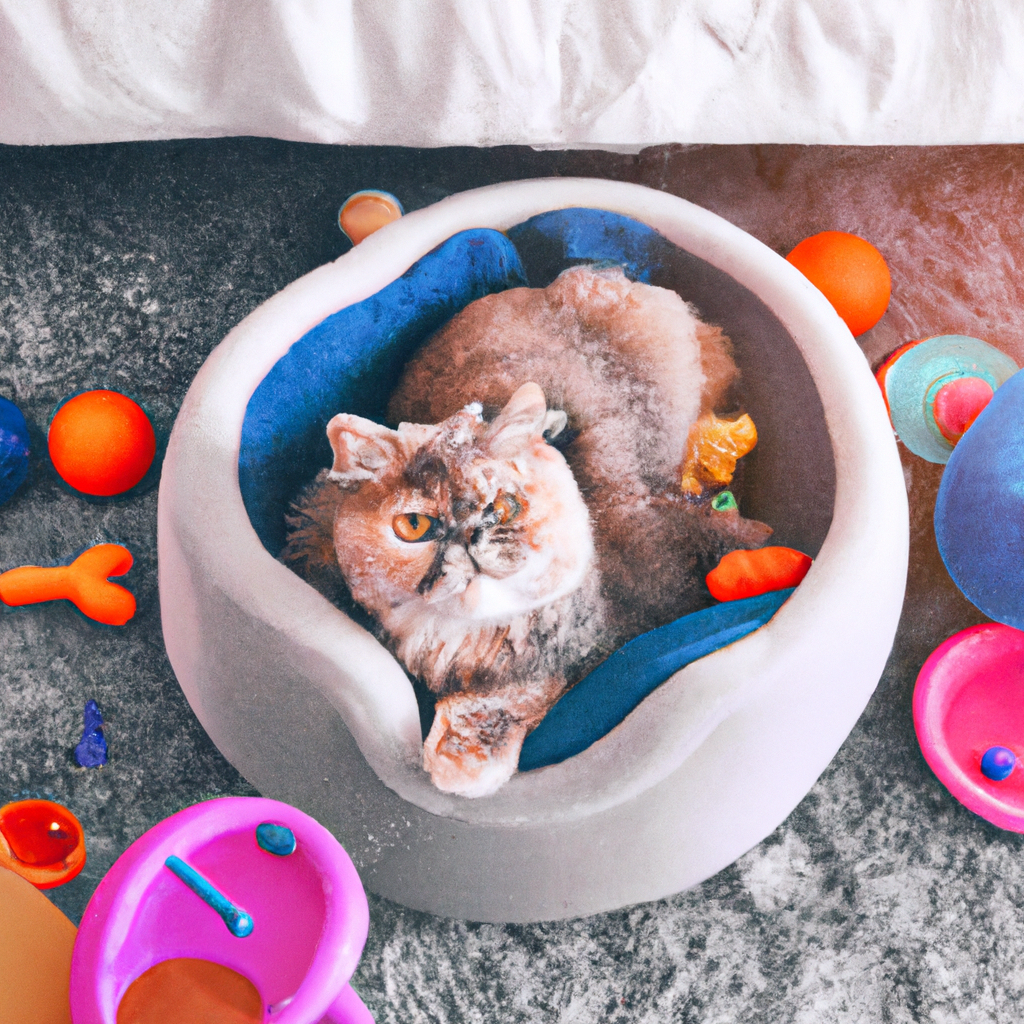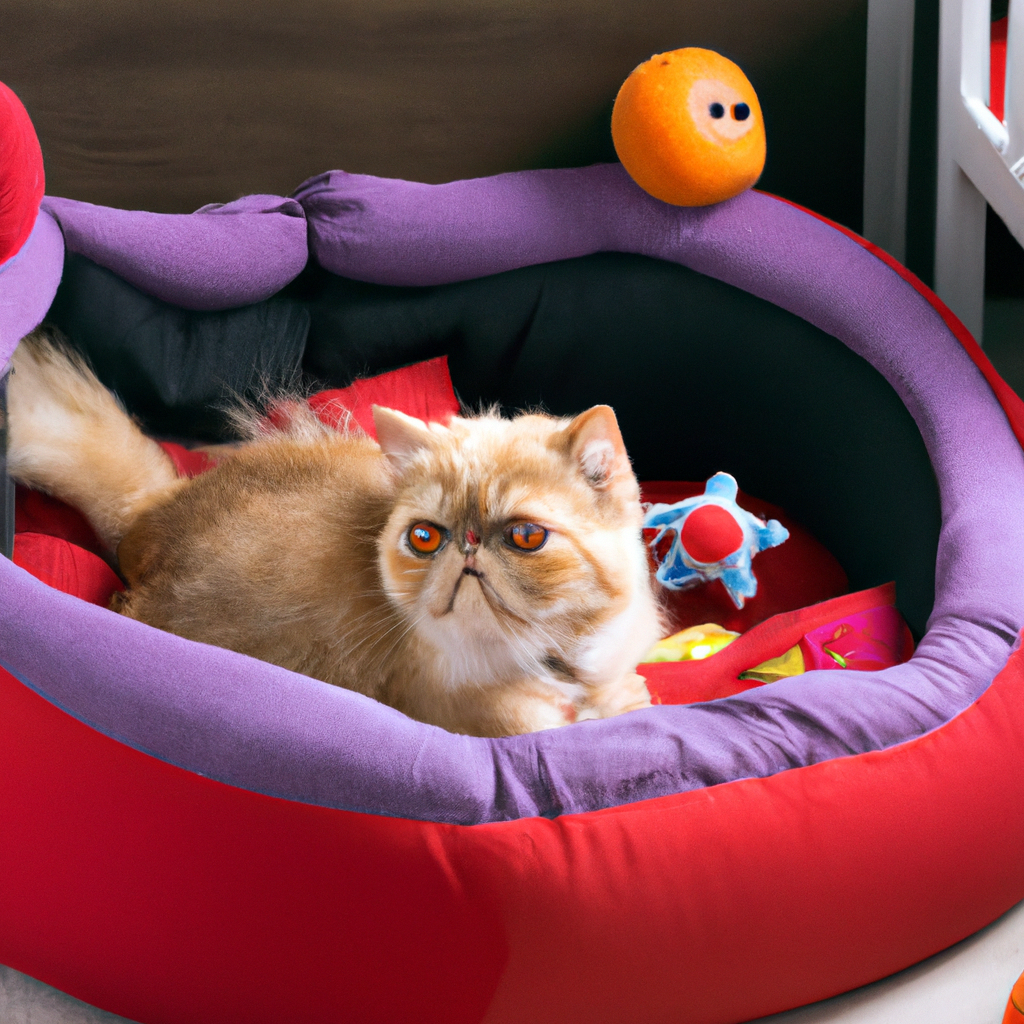Moving into a new home can be an exciting and nerve-wracking experience, especially when it comes to introducing a new feline friend like a Persian cat. With their luxurious coat and gentle disposition, Persian cats require a smooth transition to acclimate to their unfamiliar surroundings. In this article, you will discover helpful tips and techniques that will assist you in introducing your Persian cat to their new home, ensuring a seamless adjustment for both you and your fluffy companion.
Preparing the Home
Designating a Safe Room
Before bringing home your Persian cat, it is important to designate a safe room where they can initially adjust to their new surroundings. This room should be quiet and away from high traffic areas, allowing your new feline friend to feel secure. Ensure that there are no open windows or doors that could be a potential escape route. It is also a good idea to remove any hazardous objects or chemicals from this area, ensuring that the space is completely safe for your Persian cat to explore.
Making the Space Comfortable
To help your Persian cat feel at home, it is essential to make the space comfortable and inviting. Provide a cozy bed or blanket for them to curl up on, giving them a sense of security. A scratching post should also be available in the safe room to fulfill their natural instinct to scratch while also protecting your furniture. Set up a litter box with clean litter nearby, as well as fresh water and food bowls. Placing a few toys and interactive objects in the room will also help to keep your Persian cat entertained during their transition period.
Providing Essential Supplies
When preparing your home for a Persian cat, it is crucial to have the necessary supplies readily available. Stock up on high-quality cat food specifically formulated for Persian cats, as their unique breed requires a diet tailored to their needs. Invest in a high-quality litter box and litter, ensuring that it is easily accessible and maintained. Additionally, have grooming supplies on hand, including a comb or brush designed for their long, luxurious coat. Providing these essential supplies in advance will help ease the transition for your Persian cat and ensure their comfort and well-being.
Understanding the Persian Cat Breed
Physical Characteristics
One of the most notable features of the Persian cat breed is their long, dense, and luscious coat. Their silky fur requires regular grooming to prevent matting and keep it in optimal condition. Persian cats also have a distinct round face with large, expressive eyes and a short, flat nose. Their compact body is supported by short, sturdy legs. Understanding these physical characteristics will help you recognize and appreciate the unique beauty of the Persian cat breed.
Temperament and Personality Traits
Persian cats are known for their gentle and calm demeanor, making them wonderful companions for individuals and families alike. They thrive in a peaceful environment and are typically not as active or energetic as some other cat breeds. Persians are affectionate and enjoy being groomed and pampered by their human caretakers. However, they may be reserved around strangers and prefer a quiet space where they can relax and observe their surroundings. Keep in mind that each cat, regardless of breed, has their own personality, so it is important to spend time getting to know your Persian cat as an individual.

Establishing a Routine
Feeding Schedule
To ensure your Persian cat maintains a healthy diet, establish a consistent feeding schedule. Persian cats are prone to obesity, so it is crucial to measure their food portions and avoid overfeeding. Consult with your veterinarian to determine the appropriate amount of food for your cat’s age, size, and activity level. Dividing their daily food allowance into multiple small meals throughout the day can also help prevent weight gain. Stick to the feeding schedule to create a routine that your Persian cat can rely on.
Play and Exercise Time
While Persian cats may not be as active as some other breeds, it is still important to provide them with regular play and exercise. Engage in interactive play sessions using toys that stimulate their natural instincts, such as feather wands or laser pointers. This will help keep your Persian cat physically and mentally stimulated, preventing boredom and promoting a healthier lifestyle. However, always be mindful of their limitations and avoid strenuous activities that could put unnecessary strain on their bodies.
Grooming and Hygiene
The luxurious coat of a Persian cat requires regular grooming to prevent matting and keep it in top condition. Daily brushing is recommended to remove loose hair and keep their fur tangle-free. Pay special attention to areas prone to matting, such as the underarms and behind the ears. Regular baths are also necessary to keep their coat clean and free from any dirt or debris. It is important to use cat-specific grooming products and techniques to ensure their safety and comfort. Grooming sessions can also be a bonding experience and an opportunity for your Persian cat to receive the affection and attention they crave.
Socializing with Other Pets
Introducing Existing Pets
If you already have pets at home, it is important to introduce them to your new Persian cat slowly and carefully. Start by allowing them to sniff and observe each other through a door or gate, gradually increasing their exposure to one another. It is normal for there to be some initial hesitation and territorial behavior. Ensure that each pet has their own designated space and resources to prevent any potential conflicts. With time and supervised interactions, they will hopefully learn to coexist peacefully.
Supervising Initial Interactions
When allowing your existing pets to interact with your new Persian cat, it is crucial to provide close supervision, especially initially. Be prepared to intervene if any aggressive behavior occurs. Keep interactions short and positive, gradually increasing their duration as they become more comfortable with each other. Provide treats and rewards for good behavior to reinforce positive associations. Remember, the key is to create a harmonious environment where all pets feel safe and respected.
Monitoring Adjustments
After the initial introductions and interactions, continue to monitor the adjustments between your Persian cat and other pets closely. Look out for signs of stress or discomfort, such as excessive hiding, aggression, or changes in eating or litter box habits. If any concerning behaviors arise, consult with a veterinarian or animal behaviorist for guidance. Through patience, positive reinforcement, and gradual introductions, most pets can learn to coexist and even form strong bonds with each other.

Introducing the Persian Cat to Family Members
Educating Children about Cat Behavior
If you have children in your household, it is essential to educate them about cat behavior and how to interact with your new Persian cat appropriately. Teach them to approach the cat calmly and gently, avoiding sudden movements or loud noises that could startle the cat. Emphasize the importance of giving the cat space when it retreats or displays signs of discomfort. By teaching children to respect the cat’s boundaries and needs, you can help foster a positive and safe environment for both.
Teaching Proper Handling and Boundaries
Show children how to handle your Persian cat gently and with care. Demonstrate the correct way to support their body and avoid pulling on their tail or ears. Ensure that children understand the importance of letting the cat come to them and not forcing physical contact. By reinforcing proper handling techniques and setting clear boundaries, you can help create a bond between your Persian cat and the younger members of your family based on trust and respect.
Creating a Safe Environment
Removing Hazards
It is crucial to make your home a safe environment for your Persian cat by removing any potential hazards. Ensure that all toxic substances, including cleaning products and medications, are securely stored out of your cat’s reach. Keep small objects that could be swallowed away from their reach, as Persians, like many curious cats, may be prone to exploring and ingesting foreign objects. Additionally, secure any electrical cords and outlets to prevent accidents or injuries.
Securing Windows and Doors
To prevent your Persian cat from escaping or falling, secure all windows and doors with sturdy screens or pet-friendly barriers. Persian cats may be tempted to explore the great outdoors, but they are not well-equipped for the outside world. Their long, flowing coats can easily become tangled in branches or caught in fences. By ensuring that your windows and doors are secure, you can give your Persian cat the freedom to safely enjoy your home without the risk of escape.
Avoiding Toxic Plants
Certain plants can be toxic to cats if ingested, so it is vital to keep them out of reach. Research and identify any houseplants or outdoor plants in your home that may be harmful to your Persian cat. Consider replacing them with safe alternatives to eliminate any potential risk. It is also important to be mindful of cut flowers, as some may be toxic to cats as well. By being vigilant and proactive, you can create a safe and cat-friendly environment for your Persian companion.

Building Trust and Bonding
Allowing the Cat to Settle
After bringing your Persian cat home, give them time and space to settle into their new environment. The transition can be overwhelming for cats, so it is essential to be patient. Allow them to explore their designated safe room at their own pace without imposing yourself on them. Your Persian cat will approach you when they feel comfortable and ready for social interaction.
Offering Gentle Affection and Attention
As your Persian cat begins to trust their new surroundings, offer them gentle affection and attention. Slowly approach them, allowing them to sniff your hand before attempting to pet them. Stroke them gently and in the direction of their fur, paying attention to their body language. This will help establish a positive association with physical touch and build their trust in you. Remember to respect their boundaries and give them space if they show signs of discomfort or disinterest.
Using Positive Reinforcement
Using positive reinforcement techniques can help your Persian cat associate you and their new home with positive experiences. Reward them with treats, praise, and playtime when they exhibit desirable behavior or make progress in their adjustment. This will encourage them to trust and bond with you more quickly. Avoid using punishment or negative reinforcement, as it can damage the bond between you and your Persian cat and hinder their adjustment process.
Providing Mental Stimulation
Offering Interactive Toys
To keep your Persian cat mentally stimulated, provide them with a variety of interactive toys. Toys that encourage hunting and problem-solving, such as puzzle feeders or treat-dispensing toys, can engage their natural instincts and provide mental enrichment. Rotate the toys regularly to maintain their interest and prevent boredom. Spending time playing with your Persian cat using these interactive toys will not only entertain them but also strengthen the bond between you and your feline friend.
Introducing Scratching Posts
As mentioned earlier, Persian cats have a natural instinct to scratch. To protect your furniture and satisfy their scratching needs, introduce a sturdy scratching post or two in their designated space. Encourage them to use the scratching post by gently guiding their paws to it and rewarding them with praise or treats when they comply. Providing ample scratching surfaces will also help keep their nails in good condition and prevent them from becoming overly sharp or damaged.
Engaging in Playtime
Regular playtime is crucial to keep your Persian cat physically and mentally stimulated. Find activities that they enjoy, such as chasing toys or feathers, and set aside dedicated play sessions each day. Engage them in interactive play, allowing them to pounce, chase, and swat at their toys. Not only does playtime provide exercise, but it also strengthens the bond between you and your Persian cat, providing them with the mental stimulation they need for a happy and fulfilled life.

Addressing Health and Veterinary Care
Scheduling a Health Checkup
Upon bringing your Persian cat home, it is important to schedule a health checkup with a veterinarian. This will ensure that they receive a thorough examination and any necessary vaccinations or preventive treatments. The veterinarian will also be able to answer any specific questions you may have about your Persian cat’s health and well-being. Regular veterinary visits are essential to maintaining their overall health and detecting any potential health issues early on.
Learning about Vaccinations and Preventive Care
To protect your Persian cat from common diseases and parasites, familiarize yourself with the recommended vaccination schedule and preventive care measures. Vaccinations can prevent potentially life-threatening illnesses such as feline distemper and rabies. Your veterinarian will be able to guide you on the appropriate vaccines for your Persian cat. Additionally, regular flea and tick prevention, as well as deworming treatments, should be part of their routine preventive care. By staying proactive and informed, you can ensure that your Persian cat enjoys a healthy and happy life.
Dealing with Common Challenges
Managing Hairballs and Grooming Needs
The long and luxurious coat of a Persian cat requires regular grooming to prevent matting and reduce the likelihood of hairballs. Regular brushing, especially in the areas prone to matting, is crucial to maintain their coat’s health. Providing a high-quality diet and encouraging hydration can also help minimize hairballs. If hairballs become a recurrent issue, speak to your veterinarian who may recommend additional measures or dietary changes to address the problem effectively.
Addressing Separation Anxiety
Persian cats are known for their fondness for their human companions. However, this attachment can sometimes lead to separation anxiety when left alone for extended periods. To help alleviate separation anxiety, gradually acclimate your Persian cat to being alone by leaving for short periods and gradually increasing the duration of your absences. Provide them with plenty of mental stimulation, such as interactive toys or puzzle feeders, to keep them occupied while you are away. If separation anxiety persists, consult with a veterinarian or animal behaviorist for additional guidance.
Preventing Obesity
Persian cats have a tendency to gain weight, making obesity a common concern for this breed. Help prevent obesity by providing a balanced diet, measured portions of food, and regular exercise. Avoid feeding your Persian cat excessive treats or human food, as this can contribute to weight gain. Engage them in interactive play sessions to keep them active and mentally stimulated. By maintaining a healthy weight, your Persian cat can enjoy a longer and more fulfilling life.
In conclusion, preparing your home and understanding the unique characteristics of the Persian cat breed are essential steps in welcoming a new Persian cat into your family. By providing a safe and comfortable environment, establishing a routine, socializing with other pets, and creating a bond of trust and affection, you can ensure that your Persian cat thrives in their new home. Regular veterinary care and addressing common challenges will also contribute to their overall well-being and happiness. With love, patience, and proper care, you and your Persian cat can enjoy a wonderful and enriching companionship for years to come.

